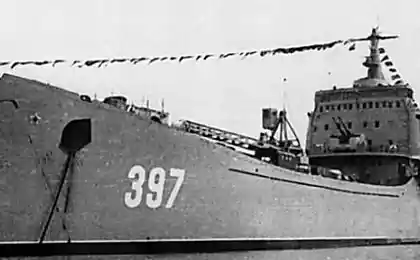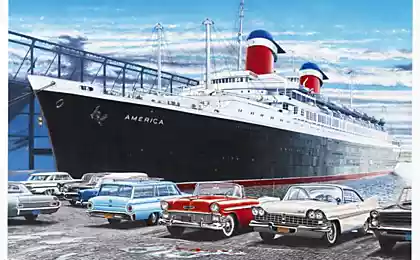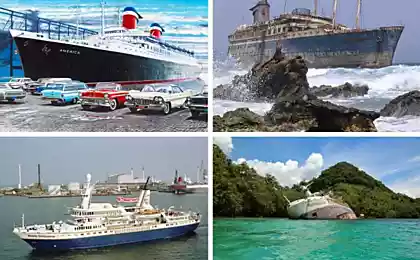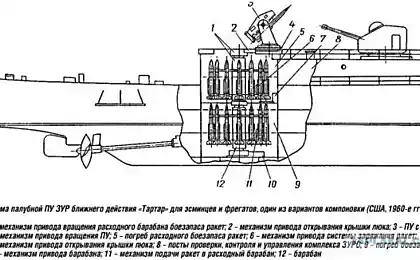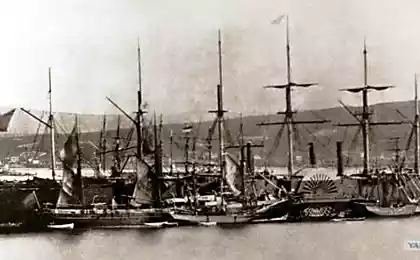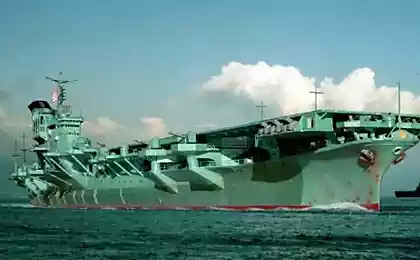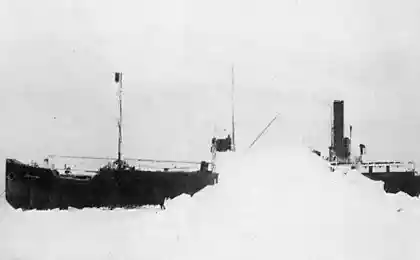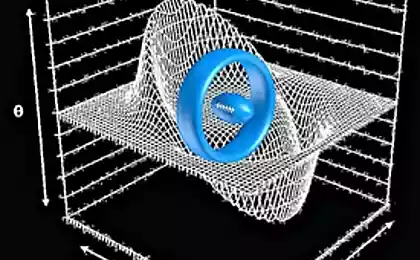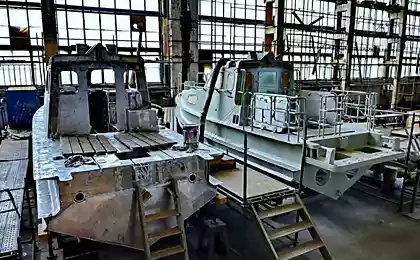1361
The oldest ship in the world unique
In 1960, at the height of the "cold war" the rapid development of the US nuclear submarine fleet required new methods of missile guidance. In this regard, the military leadership shipbuilders were offered a unique concept for acoustic research, after which the United States will receive the newest ways to missile guidance. Soon after the project was implemented by the Institute of Naval Research and the Marine Physical Laboratory at the Institute of Oceanography Scripps.
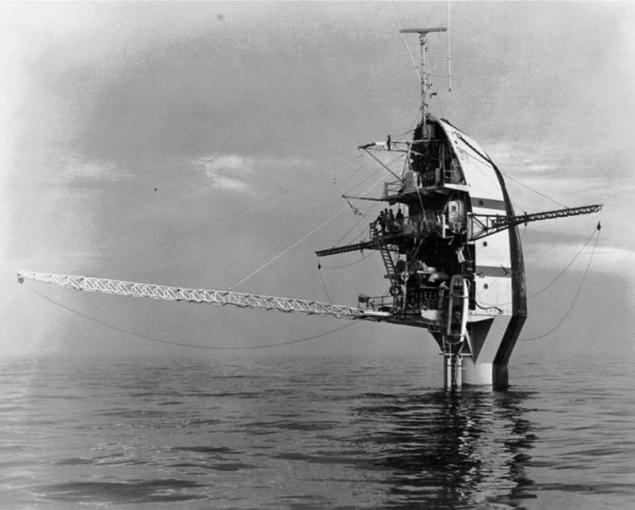
The creators were scientists Fred Fisher and Fred Spiess. To study the propagation of sound waves under water they offered an unusual design. In 1962 the company «Gunderson Brothers Engineering» was built a unique vessel dubbed «FLIP» («Floating Instrument Platform»), which translated to English means "floating platform for instrumental studies." After spending the first sea trials, scientists realized the importance of the discovery. Because now the person an opportunity to further study the circulation of water, the formation of storm and movement of seismic waves, and this is just part of the study subjects.
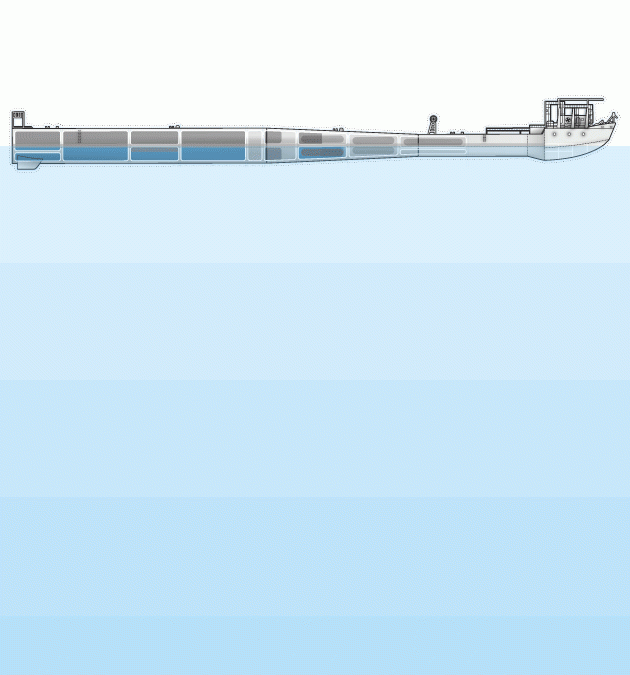
For the past 48 years, the research vessel «FLIP» successfully continues to be operated and owned by «The Gunderson Brothers Engineering Company». In 1995, the ship was modernized, it was spent about $ 2 million. New home port became La Jolla, California.
Unique vessel «FLIP» is the ability to make vertical position and back out of it. In addition to the science lab and office space for the crew occupy most of the ballast tanks.
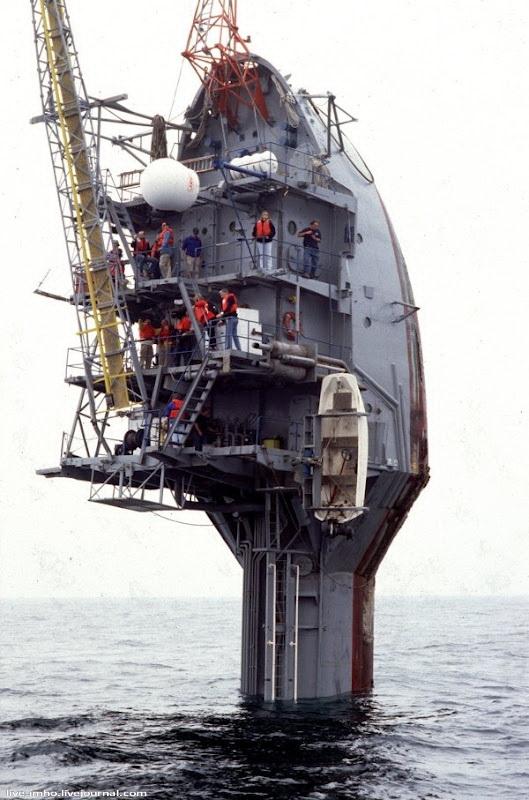
Translation from horizontal to vertical position is performed for 30 minutes
Operator filled compartments 7H, 3H partially 1B. When a water compartment number 6H, the platform starts a revolution. Compartments 1H, 2 and 4 is also filled with water. Filled compartment 1B and 3B allows you to control the sink rate. When the ballast is over a set, Kingston closed and the flow of water ceases and the platform is in a position with an inclination of 45 degrees. Then the vessel «FLIP» at 5, 6 km / h reaches the vertical position. The operator aligns by setting the water level in compartment No. 7, ensuring a strictly vertical position.

Stability of the vessel is achieved by holding three anchors of a total mass of 9 tons. In some cases, the NIS «FLIP» drifting in the ocean waters.
This unique vessel has no propulsion of its own, but is equipped with shunting propeller with a hydraulic drive. Its function is to maintain a stable state by turning the vessel around a vertical axis.
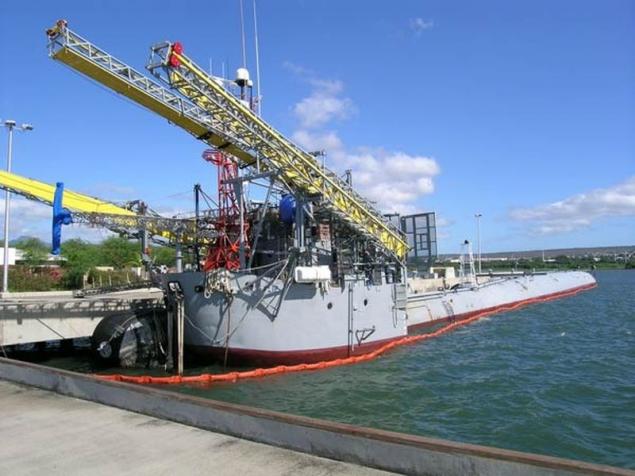
To return to NIS «FLIP» to the previous position of the vessel normally takes less than 30 minutes. Compressed air is injected volume of 90 thousand. Liters under the pressure of 18 atmospheres displace water from the ballast tanks through Kingston. After filling the vessel operator compartment 9H «FLIP» returns to the horizontal position ready for shipment to anywhere in the world ocean.
The main source of electricity are two diesel generators with a capacity of 150 kW and a 40 kW for backup use. The engine room is located high above the water, without interfering with investigations possible noise. Navigation equipment includes a gyroscope, GPS, radar, and a set of communication equipment - station VHF, HF and satellite terminals.
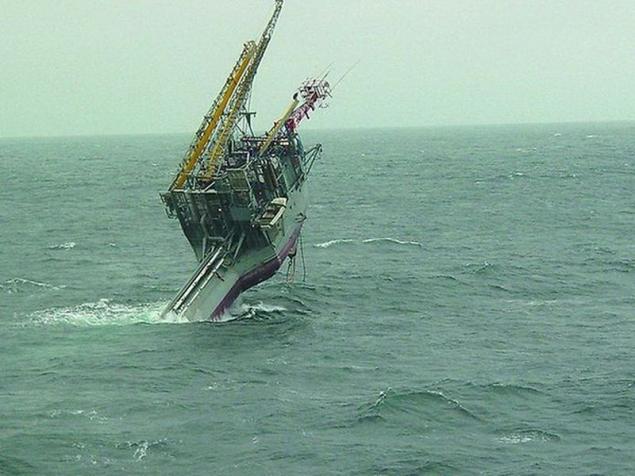
On account of the research vessel «FLIP» more than 300 successful scientific discoveries. The only ship in the world «FLIP» nowadays used for a variety of research: in his laboratory the measurements of the density and temperature of the sea water, the height of the waves, the behavior of marine species in the impact on them of different sound signals collected data to meteorologists in forecasting. It is upright boat like a huge silent buoy with which conducted listening oceans. Nine-meter wave causes abnormalities in the upright ship only 1 cm.
Sonars available on board, fixed displacement mass of water inside the wave with amazing accuracy of 1 cm / s per 1 cubic km of ocean. The clear advantage of the typical vessels made it possible not so long ago to make a natural opening - hydrophones Research Laboratory have recorded the so-called "fish Choir", which did not stop during the night-time, and the level of sound is not inferior to the volume of fans in the stadium.
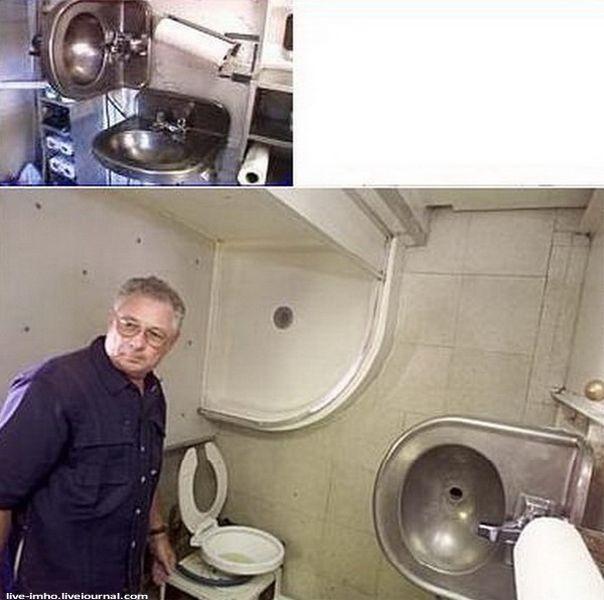
Interestingly, some of the items of interior office space (sink, toilet and shower), duplicated, without prejudice to actions of the sailors, in whatever position the vessel was not. Most of the cabins have two entrances, the bed is moved from one position to another and fixed. Scientific instruments are built into the wall, which after transformation becomes the floor. Other systems, devices and household items recorded on special rotary curtains, so keep it horizontal.
Accommodation on board is not for the weak will of the people. Command a unique vessel «FLIP» remains in cramped conditions within 30 days, and sometimes this period can take up to 45 days. After transformation, the employees have to move up and down the steep stairs, the height of a five-storey house in a narrow space.
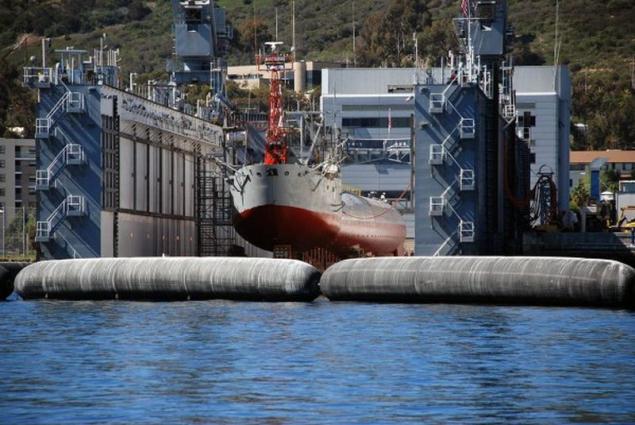
We must get used to the deck, where you were a few minutes turns into a barrier. The main rule on board «FLIP»: «Before you set foot on deck think - maybe it's the partition."
Despite the difficulties, many representatives of science prefer this way to extract useful information for humanity, being on the unique research vessel in the world under the name «FLIP».
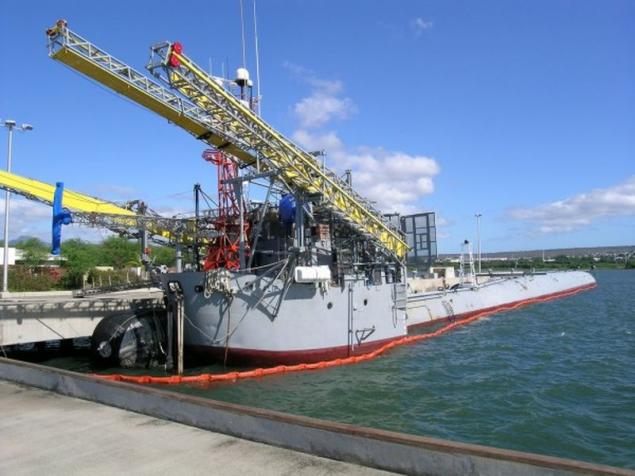
Technical data of the research vessel «FLIP»:
Length - 108 m 2;
Width - 7 to 9 m;
Draft - 3, 8 m;
Displacement - 700 tons;
Speed towed - up to 10 knots;
Power plant - three diesel-electric generator;
The crew, including research and development staff - 16 people;
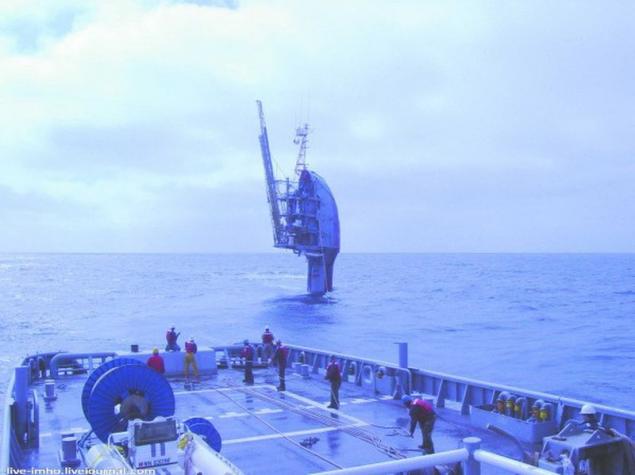
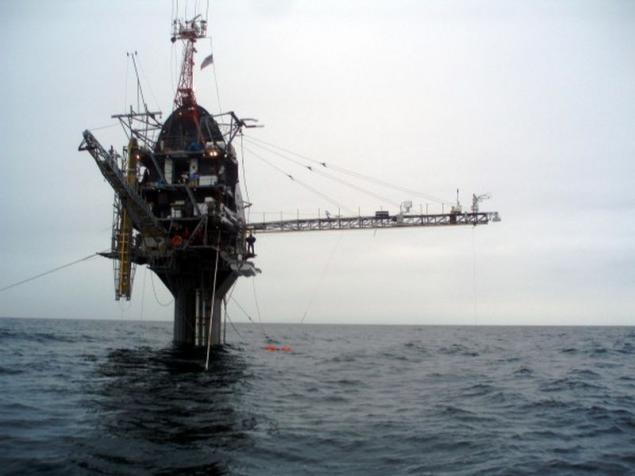
Source: korabley.net

The creators were scientists Fred Fisher and Fred Spiess. To study the propagation of sound waves under water they offered an unusual design. In 1962 the company «Gunderson Brothers Engineering» was built a unique vessel dubbed «FLIP» («Floating Instrument Platform»), which translated to English means "floating platform for instrumental studies." After spending the first sea trials, scientists realized the importance of the discovery. Because now the person an opportunity to further study the circulation of water, the formation of storm and movement of seismic waves, and this is just part of the study subjects.

For the past 48 years, the research vessel «FLIP» successfully continues to be operated and owned by «The Gunderson Brothers Engineering Company». In 1995, the ship was modernized, it was spent about $ 2 million. New home port became La Jolla, California.
Unique vessel «FLIP» is the ability to make vertical position and back out of it. In addition to the science lab and office space for the crew occupy most of the ballast tanks.

Translation from horizontal to vertical position is performed for 30 minutes
Operator filled compartments 7H, 3H partially 1B. When a water compartment number 6H, the platform starts a revolution. Compartments 1H, 2 and 4 is also filled with water. Filled compartment 1B and 3B allows you to control the sink rate. When the ballast is over a set, Kingston closed and the flow of water ceases and the platform is in a position with an inclination of 45 degrees. Then the vessel «FLIP» at 5, 6 km / h reaches the vertical position. The operator aligns by setting the water level in compartment No. 7, ensuring a strictly vertical position.

Stability of the vessel is achieved by holding three anchors of a total mass of 9 tons. In some cases, the NIS «FLIP» drifting in the ocean waters.
This unique vessel has no propulsion of its own, but is equipped with shunting propeller with a hydraulic drive. Its function is to maintain a stable state by turning the vessel around a vertical axis.

To return to NIS «FLIP» to the previous position of the vessel normally takes less than 30 minutes. Compressed air is injected volume of 90 thousand. Liters under the pressure of 18 atmospheres displace water from the ballast tanks through Kingston. After filling the vessel operator compartment 9H «FLIP» returns to the horizontal position ready for shipment to anywhere in the world ocean.
The main source of electricity are two diesel generators with a capacity of 150 kW and a 40 kW for backup use. The engine room is located high above the water, without interfering with investigations possible noise. Navigation equipment includes a gyroscope, GPS, radar, and a set of communication equipment - station VHF, HF and satellite terminals.

On account of the research vessel «FLIP» more than 300 successful scientific discoveries. The only ship in the world «FLIP» nowadays used for a variety of research: in his laboratory the measurements of the density and temperature of the sea water, the height of the waves, the behavior of marine species in the impact on them of different sound signals collected data to meteorologists in forecasting. It is upright boat like a huge silent buoy with which conducted listening oceans. Nine-meter wave causes abnormalities in the upright ship only 1 cm.
Sonars available on board, fixed displacement mass of water inside the wave with amazing accuracy of 1 cm / s per 1 cubic km of ocean. The clear advantage of the typical vessels made it possible not so long ago to make a natural opening - hydrophones Research Laboratory have recorded the so-called "fish Choir", which did not stop during the night-time, and the level of sound is not inferior to the volume of fans in the stadium.

Interestingly, some of the items of interior office space (sink, toilet and shower), duplicated, without prejudice to actions of the sailors, in whatever position the vessel was not. Most of the cabins have two entrances, the bed is moved from one position to another and fixed. Scientific instruments are built into the wall, which after transformation becomes the floor. Other systems, devices and household items recorded on special rotary curtains, so keep it horizontal.
Accommodation on board is not for the weak will of the people. Command a unique vessel «FLIP» remains in cramped conditions within 30 days, and sometimes this period can take up to 45 days. After transformation, the employees have to move up and down the steep stairs, the height of a five-storey house in a narrow space.

We must get used to the deck, where you were a few minutes turns into a barrier. The main rule on board «FLIP»: «Before you set foot on deck think - maybe it's the partition."
Despite the difficulties, many representatives of science prefer this way to extract useful information for humanity, being on the unique research vessel in the world under the name «FLIP».

Technical data of the research vessel «FLIP»:
Length - 108 m 2;
Width - 7 to 9 m;
Draft - 3, 8 m;
Displacement - 700 tons;
Speed towed - up to 10 knots;
Power plant - three diesel-electric generator;
The crew, including research and development staff - 16 people;


Source: korabley.net
